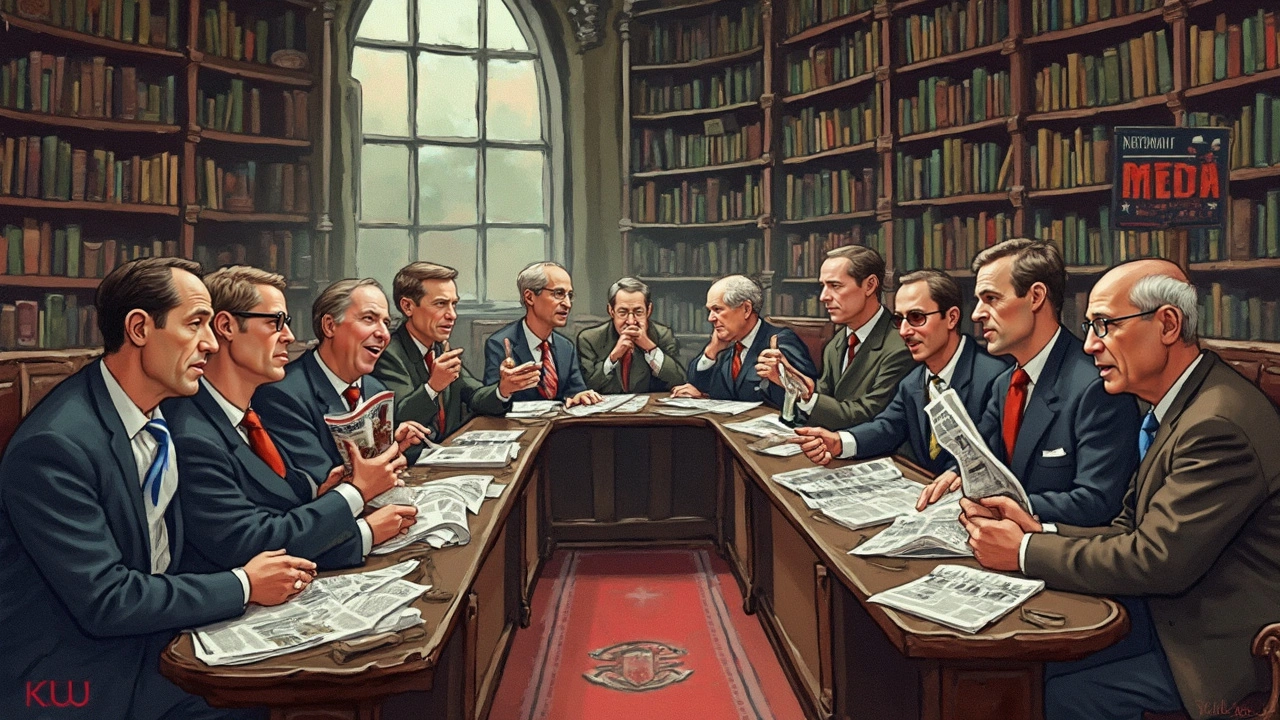Media Bias in UK News – What It Is and How to Spot It
Ever wonder why the same story can sound completely different in the Financial Times, the Guardian, or the Daily Express? That’s media bias at work, and it’s something every news reader should notice.
In plain terms, media bias is any slant that changes how information is presented. It isn’t always a secret agenda; sometimes it’s just the way an outlet chooses what to cover, the words it picks, or the angle it takes.
Why does bias happen? Ownership plays a big role. A paper owned by a conservative firm may favor right‑leaning policies, while a trust‑run outlet like the Guardian often leans left. Audience expectations matter too—readers want stories that match their worldview, so editors cater to those preferences. Politics, advertising money, and even personal opinions of journalists can add extra layers.
There are a few common types of bias you’ll run into. Selection bias means the story gets covered while others are ignored. Framing bias changes the angle: a headline that says “Government Cuts Taxes” versus “Rich Get Richer as Taxes Fall.” Language bias uses charged words like "crisis" or "boom" to sway feelings. For example, the Financial Times article on FT’s own politics shows how language can subtly signal a leaning.
Here’s a quick checklist to help you cut through the noise: check who owns the outlet, compare the same story across at least two sources, watch for loaded adjectives, and ask yourself what facts are left out. If you see a pattern of the same viewpoint, you’ve probably found a bias.
Common Signs of Bias in Headlines
Headlines are the fastest way bias shows up. Look for superlatives (“shocking,” “must‑see”) that hype emotion. Notice if the headline blames a group without evidence or if it omits key context. A title like “London’s Living Wage Still Too Low” already tells you the writer’s stance before you read the article.
How to Balance Your News Diet
The best antidote is variety. Mix a national paper with a regional one, add a straight‑news outlet like BBC, and sprinkle in a niche site that focuses on data. Try the “media bias” article on the Financial Times to see one perspective, then read the Guardian’s take on the same issue. Over time you’ll spot patterns and get a clearer picture of what’s really happening.
Remember, no outlet is completely neutral, but you can train yourself to see through the tilt. By checking ownership, comparing sources, and watching language, you’ll stay informed without getting stuck in an echo chamber.
Stay curious, keep questioning, and let the facts do the talking.

Is the Wall Street Journal Conservative or Liberal? Analysis of Its Editorial Stance
Is the Wall Street Journal liberal or conservative? Dive into its editorial history, news reporting trends, surprising facts, and what this means for news consumers.
READ MORE
Does The Guardian Support Labour? A Deep Dive into the Newspaper's Political Leanings
Wondering where The Guardian stands politically? This article breaks down The Guardian's history with UK political parties, explores its editorial stance, and digs into how its coverage shapes public opinion. Discover how endorsements and reporting have shifted over the decades, with insight into the paper's approach to hot topics like Brexit and recent elections.
READ MORE
Is the Daily Mail Right Wing? Breaking Down the News UK Giant
Wondering if the Daily Mail leans right wing? This article digs into the newspaper’s political stance, how it shapes its stories, and what that means for readers who want straight facts. We’ll talk about its history, compare it with other outlets, and show real-life examples you can spot in your daily scroll. If you want to understand how the Mail’s views line up with the political spectrum, you’re in the right place.
READ MORE
Discover Alternatives to Political Bias Assessments In News Outlets
This article explores alternatives to evaluating whether news outlets, like The New York Sun, are left or right-leaning. By focusing on different evaluation methods, readers can gain insight into the complexities of media bias and discover practical approaches to better understand the political leanings of news sources.
READ MORE
Is CNN Democratic or Republican Leaning? Explore 8 Alternatives
In a world where media bias is often scrutinized, exploring alternatives to questions about CNN's political alignment is essential. This article delves into eight options that offer different angles on assessing CNN's coverage, each with unique advantages and drawbacks. From evaluating narrative similarities with major political parties to considering third-party oversight, this guide helps readers understand the complex landscape of media assessment. Read on for a comprehensive breakdown of each alternative's pros and cons, presented in an easy-to-digest format for informed news consumption.
READ MORE
What's the Deal with USA Today's Political Leanings? Uncover Alternatives in 2025
Looking for alternatives to USA Today in 2025? Discover how newspapers like The Tennessean offer robust local insights along with their political biases, providing fresh perspectives for readers seeking balanced news. Explore pros and cons of these alternatives to find news that speaks to your viewpoint.
READ MORE
8 Challenging Alternatives to US Adults Getting News from TikTok
Explore alternatives to understanding how US adults get news from TikTok. Dive into intriguing angles, like political affiliations and media bias on platforms such as Truth Social or X. Learn how these factors inform media strategies and uncover reader tendencies. Assess the impact of these insights on content strategies and navigate potential pitfalls.
READ MORE